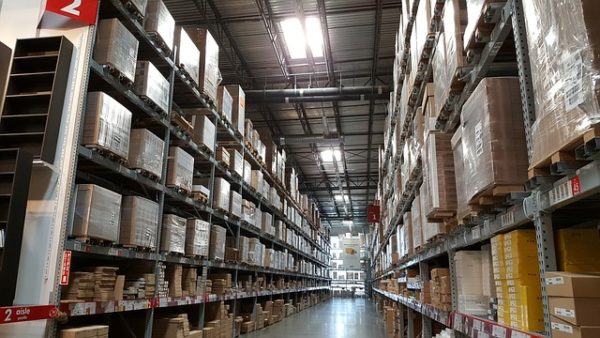Distribution centers are expensive enough to operate — particularly if you aren’t careful about your budget, logistics, and space. The cost of labor, storing large volumes of goods, and expensive, space-consuming equipment don’t make your job as a manager or owner any easier. To help streamline your operations, there are ways to maximize your facility in a cost-productive manner that help you garner a higher return in the long run.
Searching for a complete solution can prove difficult, but that’s okay: no single warehouse is perfect, and there will always be room for improvements and refinements down the line. What’s important is to focus on adjusting to your current situation and defining solutions to what’s happening now. This prevents you from being overwhelmed later down the line.
Maximize Your Space
Space is one of the biggest issues in warehouse management, especially for larger warehouses. Typically, the larger a warehouse is, the less employees are able to identify gaps where space could be properly utilized. And when space management isn’t a factor in your facility, you lose money in small ways that add up: there’s less room for additional product, higher labor costs, and additional time moving from product to product.
Even smaller warehouses can still run into issues. Cramming a load of products into tight quarters proves just as ineffective, because there’s no rhyme or reason to the organization, which can make those products more difficult to locate and cause additional delays.
One way to work on space utilization is to look into material handling solutions that work well with your product. High quality structural pallet racking, and various other warehouse storage products and racking accessories can help you make the best of your warehouse space. Essentially, these storage solutions are the tools to your revitalized space-saving programs, and help you coordinate everything in your center.
Examine Your Workflows
By analyzing your warehouse’s current workflows, it will be easier for you to identify areas of opportunity. For example, if you notice your employees frequently have trouble locating a specific type of item or have a much slower time to retrieve and ship when dealing with a certain product, you can then make proper adjustments to eliminate those bottlenecks. Or, after talking with your staff, you might discover that there’s an unnecessary amount of time being spent on repetitive tasks. This is the perfect time to figure a new way to automate some of those tasks to speed up the process.
ERP with Warehouse Management Component
In the supply chain management world, keeping your warehouse in great working order and moving your product efficiently from one place to the next is critical for business. Mistakes made during the process can be costly, and certainly add up. Every warehouse should be using software to help manage their inventory and streamline operations.
In order to have complete 360-degree overview of what’s happening within your organization, you need the right technology. Some software comes equipped with features specific to warehouse management, while other ERPs make it easy to integrate with warehouse management solutions. With the right product, you can quickly locate inventory, better manage your intake and outtake, manage your space, speed up fulfillment, and cut costs.
Solutions with a modular design also make it easy to adjust the platform to cater specifically to your needs, rather than opt for a one-size-fits-all solution. This is especially useful for warehouses that hold a variety of unrelated products.
Improve Ergonomics In The Workplace
Employees in the transportation and warehouse space are much more prone to injuries and other types of risks than other types of industries. In 2012, the Bureau of Labor Statistics found that the U.S. warehousing and storage subsector experienced employee injuries at a rate of 5.5 per 100 full-time individuals, and musculoskeletal injuries were twice as likely to occur here than in the general private industry. To best keep your employees safe and save money, it’s best to begin implementing ergonomic practices into your warehouse.
There are both ergonomic principles and ergonomic products. Ergonomic principles refer to practices that keep your employees safe on the job, like placing frequently-used items on low shelves, using rolling conveyor when possible, and properly training employees on picking and placing techniques. Ergonomic products that can help your employees in the workplace include workstations, benches, floor mats, and carts. Both should be used to eliminate the chances of workplace injuries and keep your operations running smoothly.
 Gearfuse Technology, Science, Culture & More
Gearfuse Technology, Science, Culture & More



